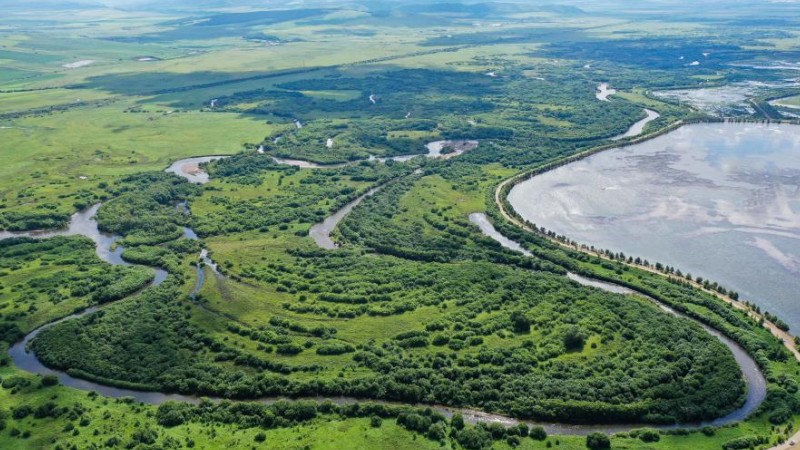Change and the unchanged in "village of happiness"
KUNMING, Aug. 2 (Xinhua) -- Nestled in the picturesque mountainous village of Simola in southwest China's Yunnan Province, Zhao Renxin's store attracts a constant stream of visitors each day. Sitting contentedly amidst the warm ambiance of the store, he reflected on how he now truly grasped the essence of the village's name.
Simola is a 500-year-old Wa ethnic village in Tengchong City. In Wa ethnic language, it means "a place of happiness."
"The first thing that comes to my mind when thinking about happiness is roads," said the 42-year-old store owner, pointing at the flagstone pavement outside the gate.
"In the past, the village roads were very muddy and slippery, posing a constant risk of falls," he recalled. "But now flagstone roads have been paved, extending all the way to the doors of every household."
It is not the only thing that changed in the village. Zhao recalls a time when the roadsides were piled up with the feces of pigs, cattle and sheep. However, due to the recent development of tourism, the village has undergone a remarkable change. Now, the village exudes cleanliness, with charming rural houses and courtyards adorned with beautiful murals and vibrant flowers.
For visitors coming here for the first time, it might be difficult to fathom that merely a decade ago, Simola was plagued by poverty.
In 2014, of the 304 villagers from 72 households, 71 in 16 households were registered as impoverished. The per capita disposable income of the village stood only at about 4,600 yuan (about 642 U.S. dollars). During that period, many individuals left the village in search of work opportunities elsewhere, leaving behind only the elderly and the young. Consequently, the village had only 200 permanent residents.
A significant turning point came about when China initiated its poverty eradication efforts, resulting in numerous development projects and remarkable improvements to the village's houses, roads and overall environment.
In June 2020, a tourism cooperative was established in Simola. Captivating scenery and rich Wa ethnic culture soon turned the village into a tourism hotspot. In 2021, Simola received about 198,000 visitors, and the per capita disposable income of the village increased to 18,860 yuan.
Lots of young people working outside the village chose to return since then. Today, the number of permanent residents of the village is 290.
Running his store has not only provided Zhao with a stable income but also granted him the precious gift of spending quality time with his parents and children. He said that the happiness he experiences with his family now surpasses anything he had ever felt while working elsewhere.
Along with the living standard, the awareness for education is also rising, in Simola. As the village's emphasis on children's education grew, a reading room was opened to cater to their educational needs.
According to Feng Huaizhao, a village official, they had to knock on the doors and persuade villagers to send their children at least to a vocational school. "Now they come to us to inquire about student loans," he said, adding that to date, the village has produced 21 university students.
Amid all the major transformations in Simola village, something has remained unchanged.
Wa ethnic group, also known as Va, with a population of about 420,000, is one of the 55 ethnic minorities in China and mainly lives in Yunnan.
The Wa tradition has been well preserved in the village, and the unique sacrificial rituals of weddings and funerals are still performed today.
Walking in the village, tourists can always spot buffalo skulls symbolizing humility and kindness on trees, as well as murals depicting the life of the Wa people.
During traditional festivals, the Wa people would go to the village square and celebrate with traditional hair-swaying dance and wood-drum dance.
A heartwarming sight unfolded as a group of visitors and villagers danced joyously on the public square, singing an old song cherished by the Wa ethnic group. The lyrics, "As you walk, the road is becoming broader," reverberated through the arena.
Photos
Related Stories
- Mountain villagers embrace new life in modern settlement
- Transforming hollow village into thriving tourist destination
- Infographics: Green Rural Revival Program drives remarkable transformation in Zhejiang
- Village witnesses ongoing growth of homestays in E China's Zhejiang
- Strolling back in time through Guangzhou's ancient village
Copyright © 2023 People's Daily Online. All Rights Reserved.









